Discover the Best Feng Shui Houseplants – 12 Varieties to Bring Positive Energy, Harmony and Good Health into Your Home
Harnessing the power of these plants can transform the energy in your home

Rachel Bull

- 1. Money Tree – Pachira aquatica
- 2. White Bird of Paradise – Strelitzia nicolai
- 3. Jade Plant – Crassula ovata
- 4. Pothos
- 5. Snake Plant – sansevieria
- 6. Philodendron Heart Leaf – Philodendron scandens
- 7. Anthurium clarinervium
- 8. Rubber Plant – Ficus elastica
- 9. Rattlesnake Plant – Calathea lancifolia
- 10. String of Hearts – Ceropegia woodii
- 11. Aloe Vera
- 12. Peace Lily
- FAQs
With Feng Shui plants you can welcome positive energy into your home, as well as enjoying the beauty of these living accessories.
There are many benefits to adding indoor plants to rooms in your home. They can soften and enhance the look of a space; some are said to improve sleep and help to purify the air. But have you considered that through careful choice and placement of Feng Shui plants for specific spaces in the house, you can improve the flow of positive energy in your life?
'In Feng Shui we seek to improve the flow of Chi which is our vital life force energy,' explains Anjie Cho, New York based interior architect, feng shui advisor and author of Holistic Spaces, 108 ways to create a Mindful and Peaceful Home. 'Living green plants represent the wood element, which is said to cultivate human hardiness, flexibility, healing and growth. So not only can you bring these qualities into your life and home by adding plants, but by bringing in the element of nature into your interior space you will have more harmony between your inner environment and outer environment.'
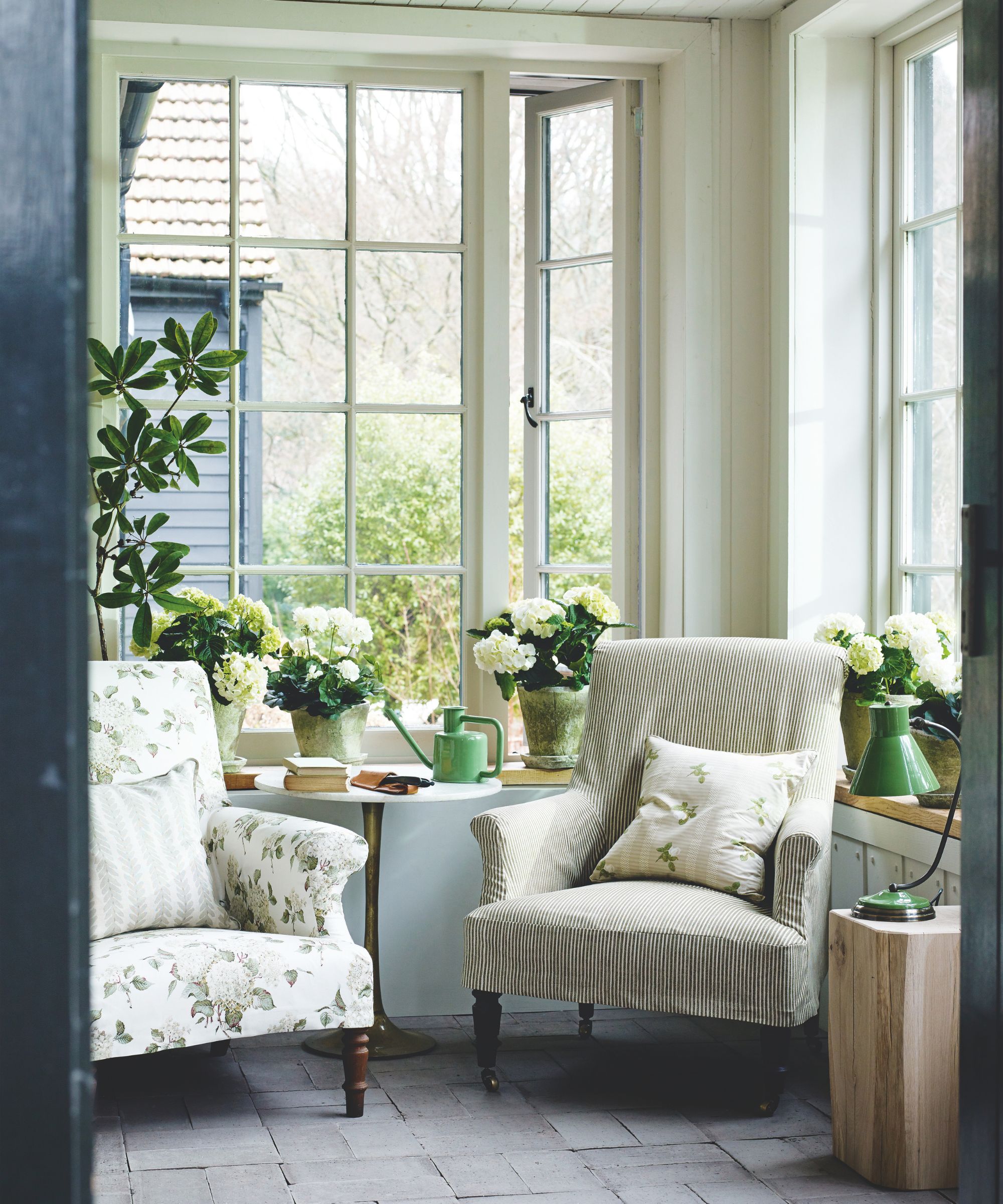
The 12 Best Feng Shui Plants
You can include a Feng Shui essential plant in any room in the house, but there are certain choices that may be better for different areas.
'In general, look for soft, rounded and especially heart shaped leaves in Feng Shui plants – you want to bring in more ease and flow to your life and space,' says Anjie Cho. 'For instance, in a partnership area, such as a bedroom, you might not want to place two cacti, as this would introduce prickly, sharp energy.'
'Spiky plants are not good for Feng Shui; it is said that sharp points drain the personal energy, so something like a cactus doesn’t promote good energy,' agrees Rana Kashiwabara, a San Francisco based, Feng Shui certified interior designer.
'When thinking about plant selection, most are naturally air cleaning indoor plants, the wood element brings balance, and adding green color to the space is very good, because it is a very uplifting color. Rounded edged leaves are good for all parts of the home because they bring great subtle energy,' Rana adds.
Design expertise in your inbox – from inspiring decorating ideas and beautiful celebrity homes to practical gardening advice and shopping round-ups.
1. Money Tree – Pachira aquatica
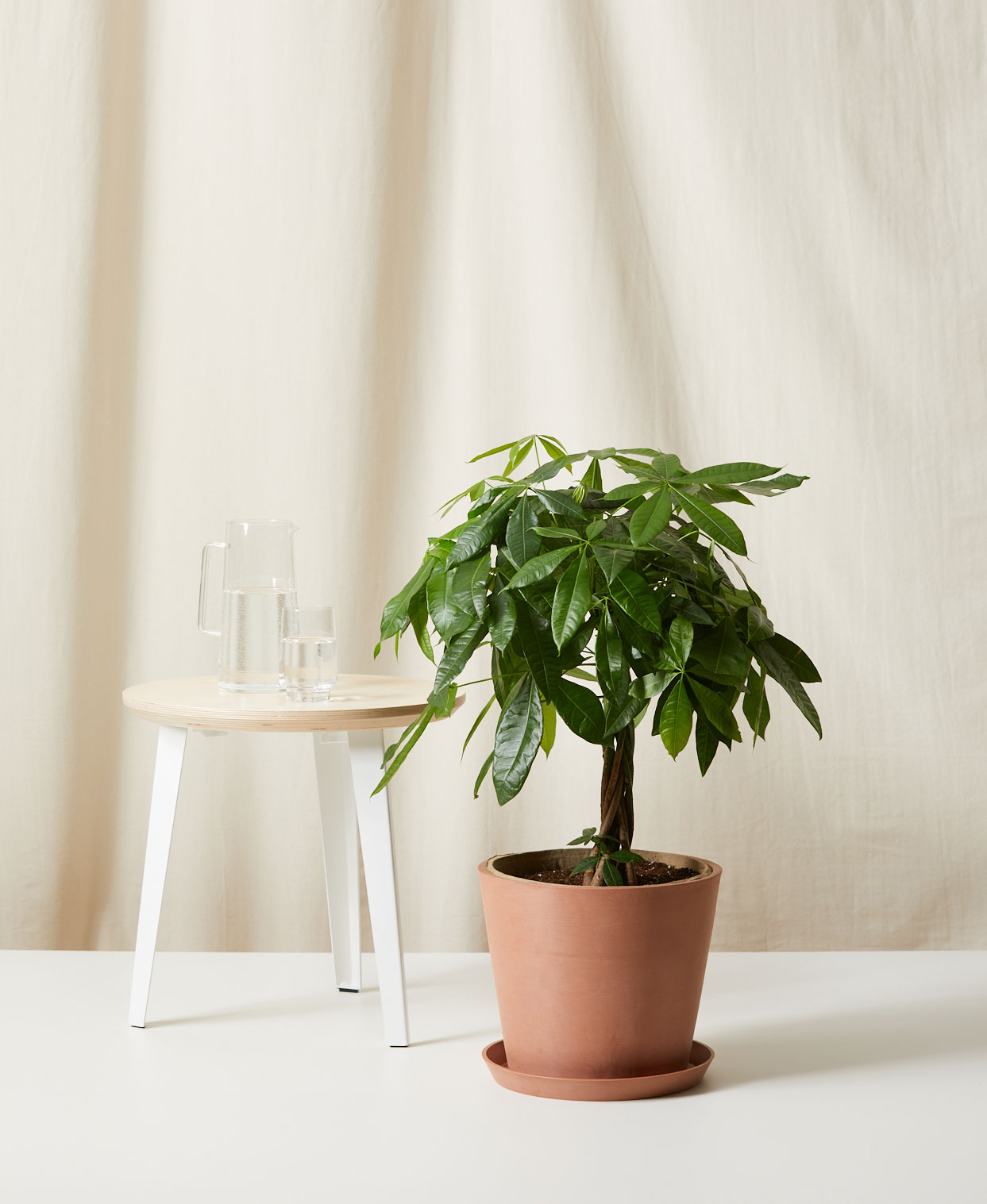
'Money trees are commonly used as Feng Shui plants and believed to bring wealth and good fortune,' says Bloomscape's gardening expert, Lindsay Pangborn.
'But it's also not just financial abundance they represent – financial wealth doesn’t necessarily mean someone feels abundant inside,' Anjie Cho adds. 'Plants don’t grow quickly, they take time to cultivate and that teaches you patience. It's not about getting rich quick, but how to create a steady, healthy flow of wealth into your life.'
With distinctive features, including its palmate leaves and gracefully braided trunk, 'the money tree not only absorbs toxins from the air, but can act as an impactful décor piece,' Lindsay adds.
Make sure you learn about money tree care to keep your plant healthy and improve its feng shui benefits.
'A money tree prefers deep, infrequent waterings when the soil volume is 75 per cent dry. It thrives in bright, indirect light, growing most evenly when it’s regularly turned so that each side receives an equal amount of light,' says Lindsay.
You can find money tree live plants plus a decorative pot available from Amazon.
2. White Bird of Paradise – Strelitzia nicolai
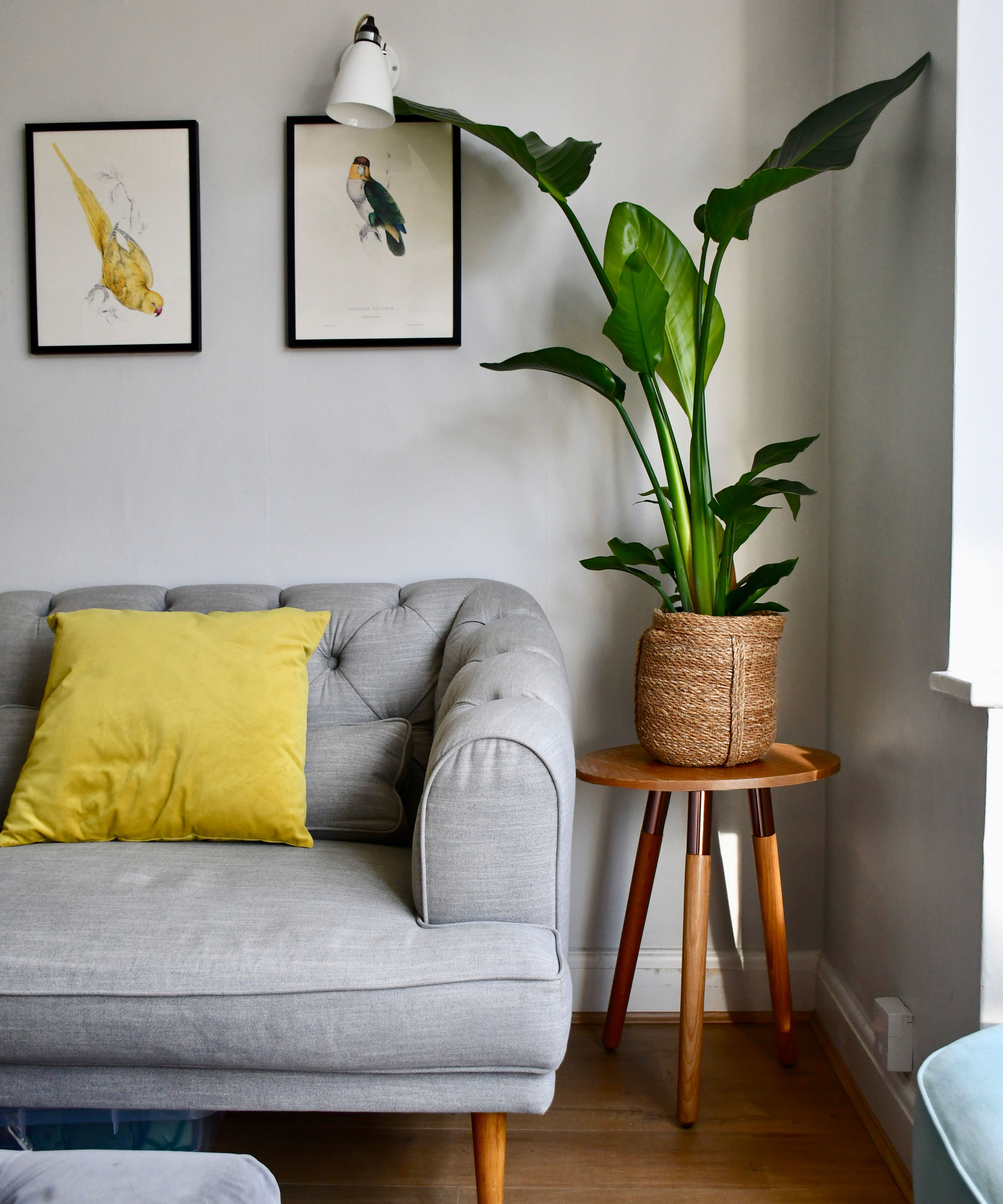
Foliage plants with lush leaves are traditionally the best Feng Shui plants, promoting clean air and positive energy in living spaces.
The Strelitzia nicolai, or white bird of paradise is a bold, elegant, tall houseplant, originally native to South Africa.
Although it's a tall houseplant, it doesn't take up a lot of space with its slim form. It likes high or afternoon sunlight and wants to be kept dry, so go easy on the watering. This is a great beginner's plant as it is easy to care for.
You can find Costa Farms white bird of paradise plants at Amazon.
3. Jade Plant – Crassula ovata
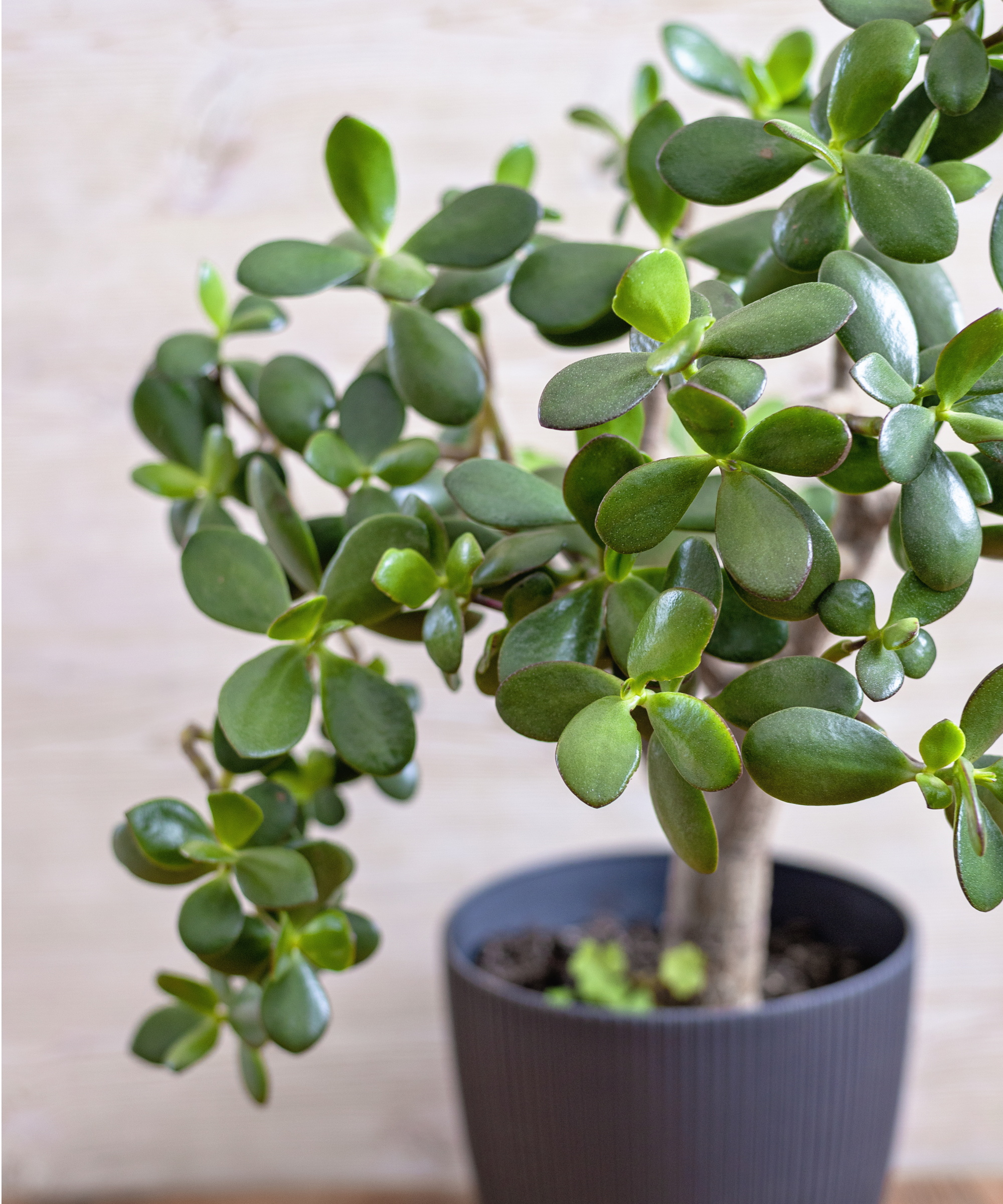
The jade plant or money plant is a popular succulent house plant with a miniature tree-like structure and thick, fleshy, opal-shaped leaves.
Crassula ovata is believed to attract wealth due to the coin-shaped nature of its leaves, and also bring good fortune. There are several places to put a jade plant for postive Feng Shui, say the experts.
'The money plant is a good Feng Shui plant for office Feng Shui. Typically, the southwest area of the home attracts wealth, prosperity, and abundance. But you can use these plants to attract wealth and prosperity in any space,' says Rana Kashiwabara.
Jade plants, exactly like this one from Amazon, prefers bright, indirect light, with a few hours of direct sunlight each day to help keep their foliage full and vibrant, making them the perfect plants for windowsills and conservatories.
Money plants are easy to care for, and they typically have uniform growth. Find out how to care for succulents to keep them in the best condition.
These plants do not need to be pruned regularly to look clean. They will hold all their foliage for months without dropping a leaf if cared for properly. When rotated regularly – every watering – at about 45 degrees, they should offer nice uniform growth throughout.
4. Pothos
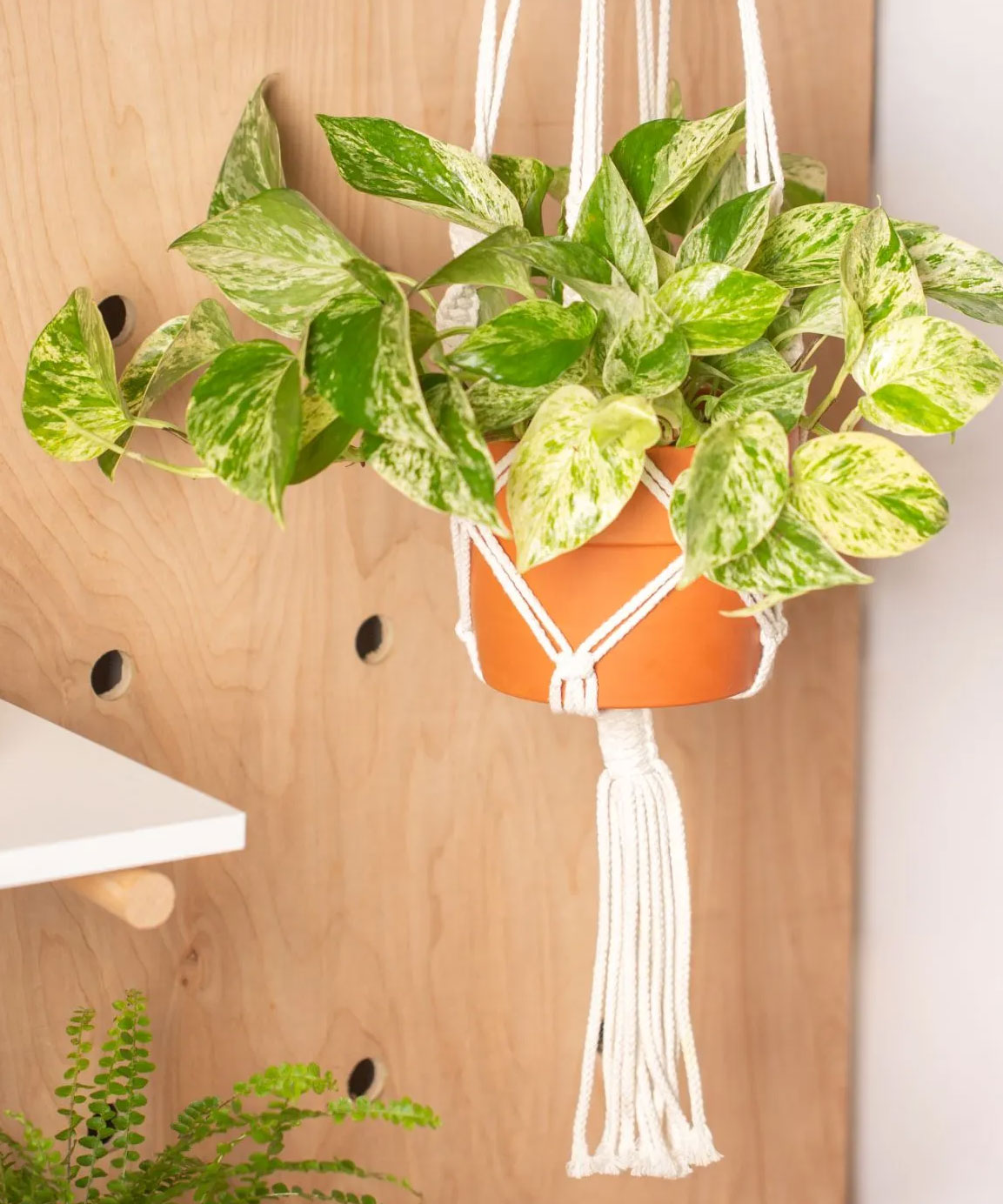
'I love pothos as they are hardy plants that even a beginner can take care of,' says Anjie Cho.
'They create a sense of abundance and generosity as they are so easy to propagate. Just as if you have a fruit tree on your land, it gives more than one family can consume. So too, house plants can also offer this teaching on sharing and generosity and abundance,' says Anjie Cho.
Knowing where to place a pothos in your home is vital for positive Feng Shui.
It is easy to get to grips with pothos plant care and there are many varieties of these excellent feng shui plants to choose from, such as the Marble Queen pothos from The Sill, with its waxy green leaves streaked with white.
5. Snake Plant – sansevieria
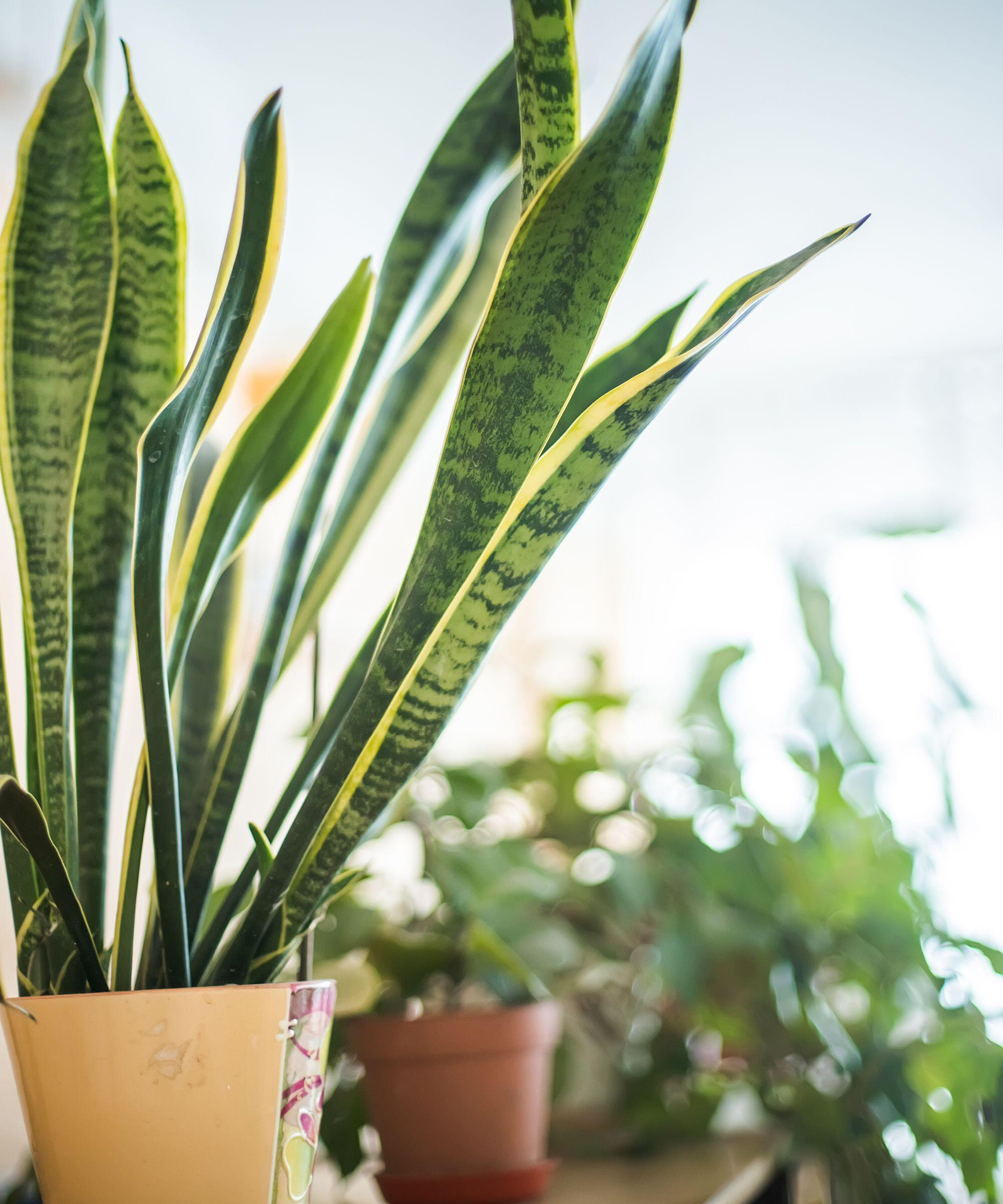
'A snake plant, sansevieria, that has a sword like leaf shape works well for a hallway or entry way as a feng shui plant that offers a feeling of protection,' says Rana Kashiwabara.
'You can place plants either side of a front door to create a gateway to enhance the positive flow of Chi into your home,' adds Anjie Cho.
Snake plants are very low maintenance and can handle low light levels so are a good choice for low light plants.
Snake plants also produce oxygen at night time, helping to cleanse your indoor environment, so are a good choice as a bedroom plant.
You can find out exactly where to place a snake plant in your home for positive Feng Shui in our expert guide.
Discover the range of gorgeous snake plants at The Sill.
6. Philodendron Heart Leaf – Philodendron scandens
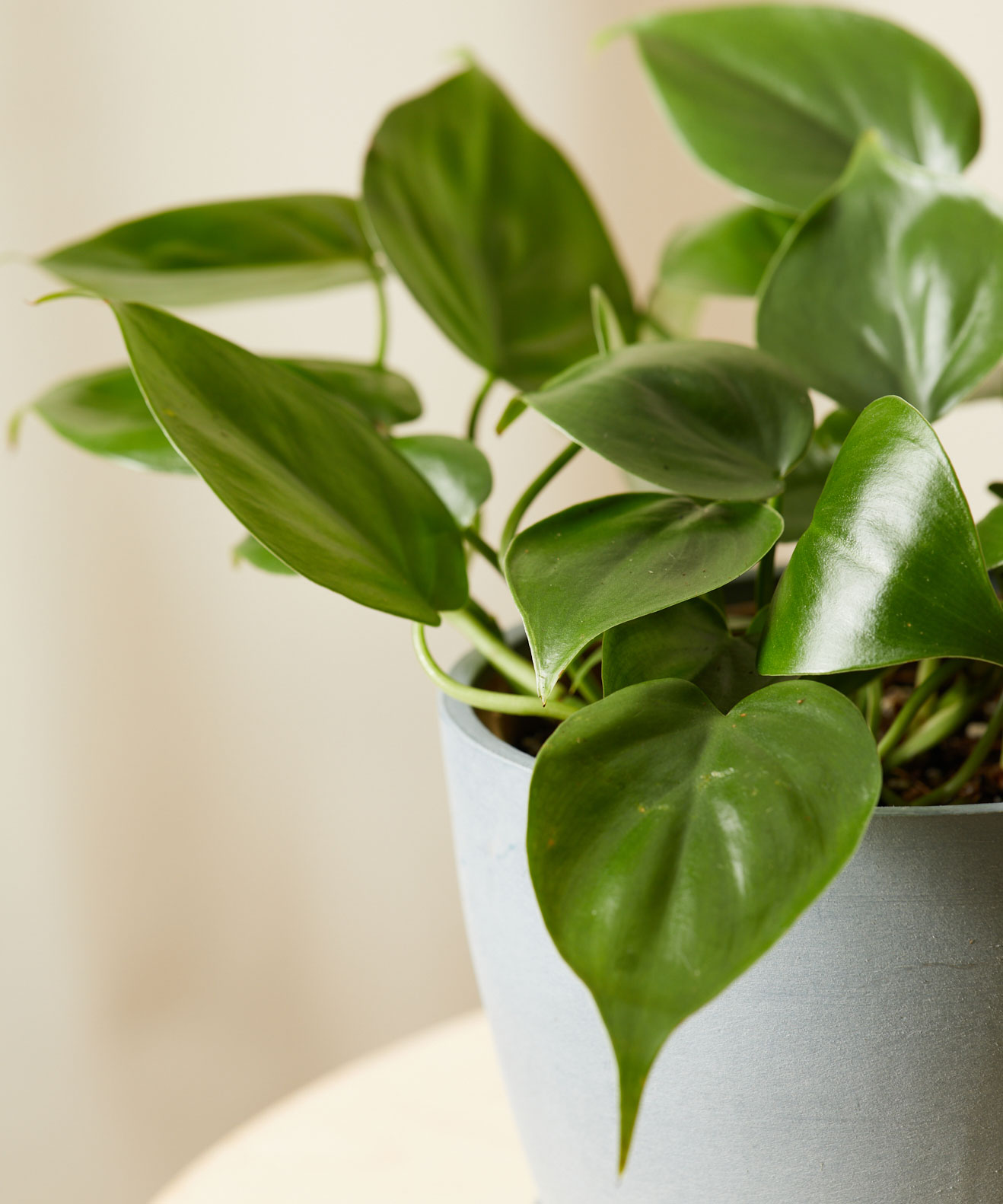
'The philodendron heart leaf is an air-purifying vining plant that is easy to care for and has fun, heart-shaped, glossy leaves,' explains Lindsay Pangborn of Bloomscape.
This low-maintenance plant is a great addition for an office desk or shelf where its vines can trail down, boosting positive energy as you work. The Sill has a lovely selection of philodendron plants, including this one.
It is very forgiving Feng Shui plant and able to tolerate all types of neglect, including low light – so is a good choice as a winter house plant – tight roots, and inconsistent watering.
'To help it thrive, provide bright indirect light. A humidity boost is not required, but higher humidity levels promote larger leaf development,' says Lindsay.
7. Anthurium clarinervium
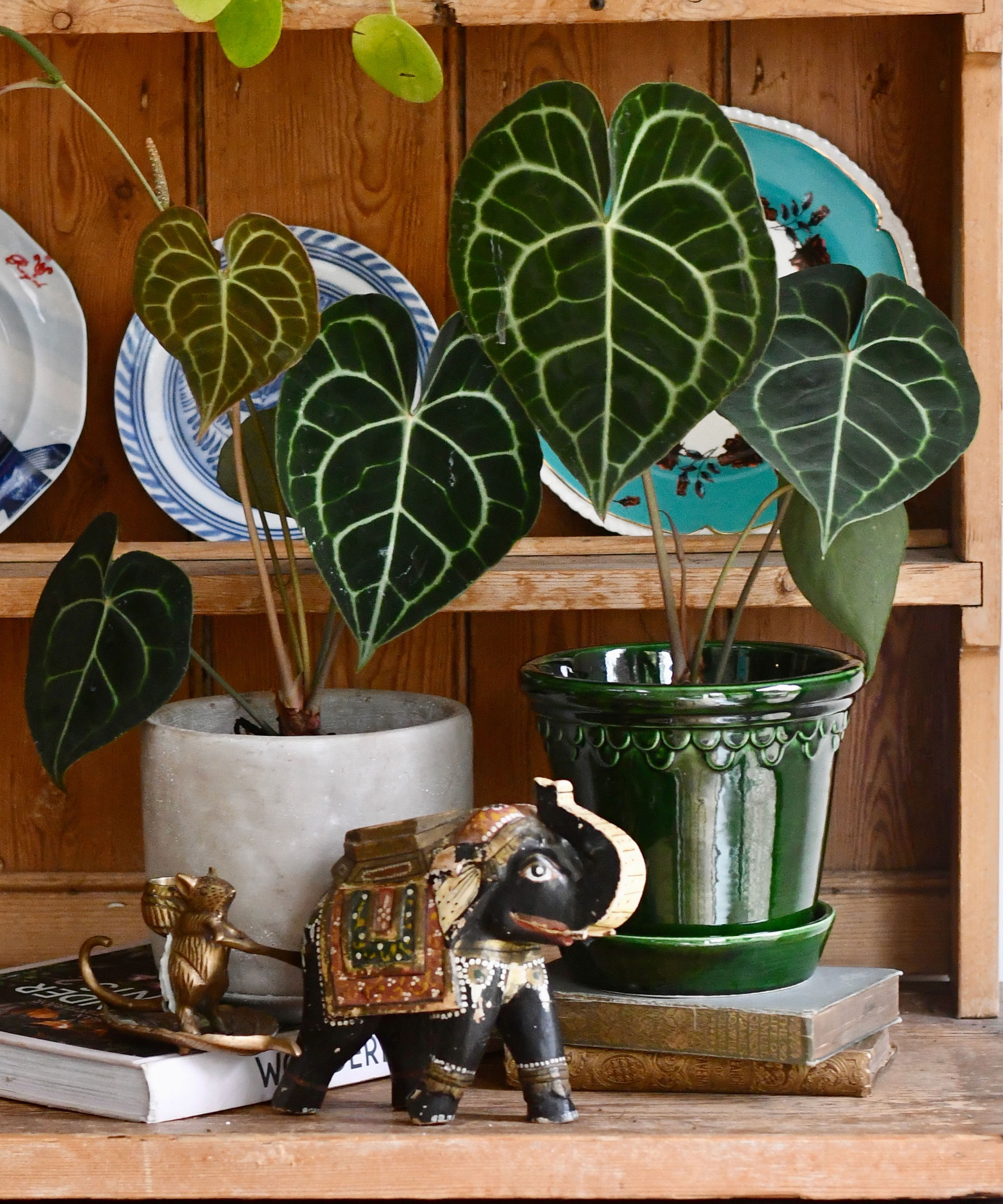
The leaves of the Anthurium clarinervium are large, dark green – almost black – have a beautiful velvet texture, and are the perfect heart feng shui plant shape.
The white veins stand out against the leaves' dark green, forming a stunning pattern. This is a fantastic foliage house plant, and will look amazing in any room in your home.
Anthuriums love humidity, so a shower room, bathroom, or steamy kitchen would also be perfect for it.
8. Rubber Plant – Ficus elastica
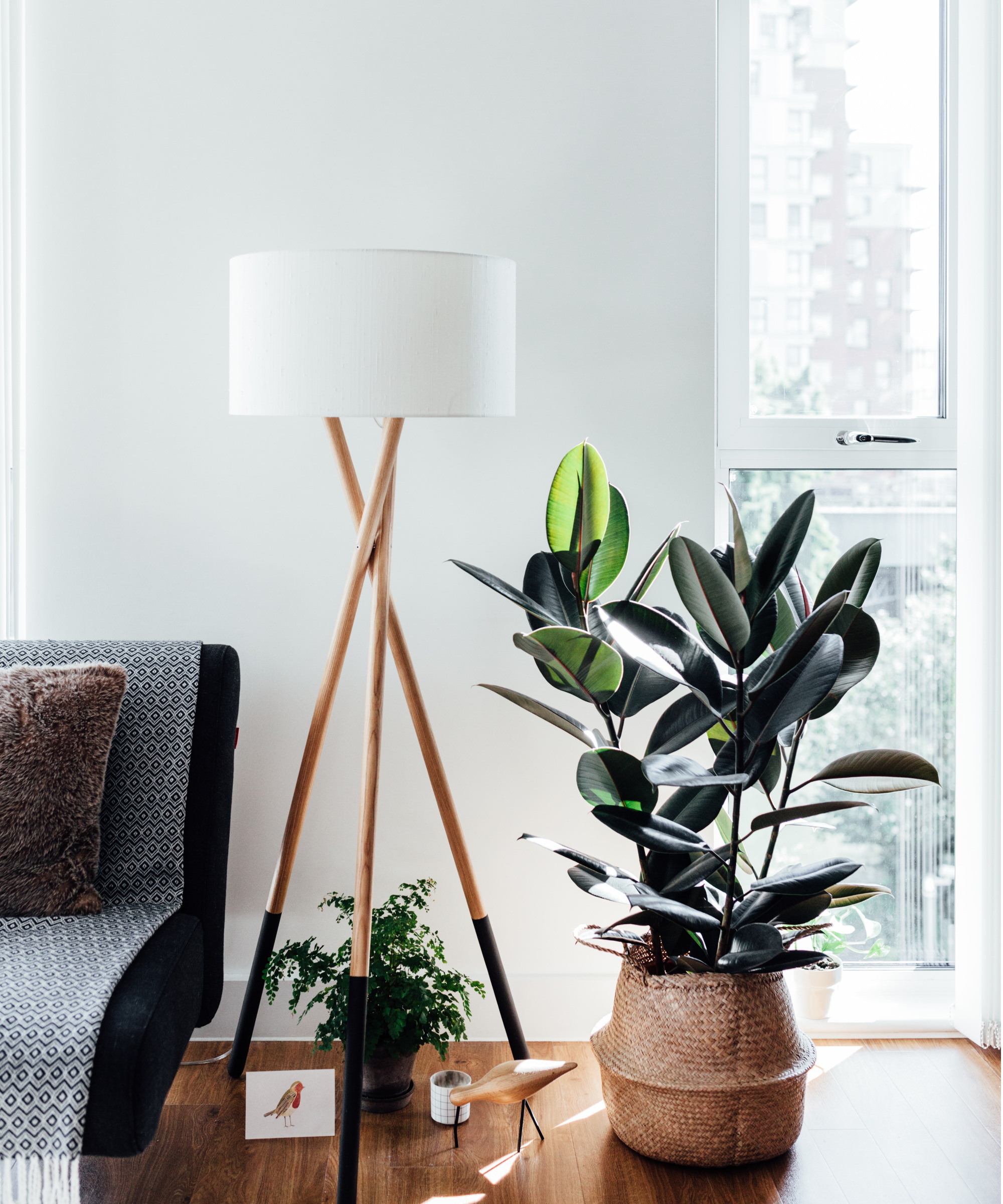
'One of the best air-filtering houseplants, the rubber plant features wide, glossy green foliage and can reach ultimate heights of 32 feet (10m) with the correct care,' says Mark McCance of Hortology.
'The broad leaves of the rubber plant are said to help the flow of positive energy throughout interiors, helping to eradicate negative Chi and promote health and prosperity,' he adds.
These Feng Shui plants require their soil to remain moist at all times; allow the top layer of soil to dry out slightly in between waterings and apply a small dose of plant nutrition 1-2 times a month during the growing season.
'It is a bit of a superhero when it comes to removing toxins from your air, keeping you feeling refreshed. To optimize the Feng Shui of the plant, we suggest that you position it in a sunny spot that is in the east or south east of your home. In this position, it should bring an air of calm and positivity into your space,' advises Shannon Barnadin, co owner of The African Garden.
You can find rubber plants at Amazon.
9. Rattlesnake Plant – Calathea lancifolia
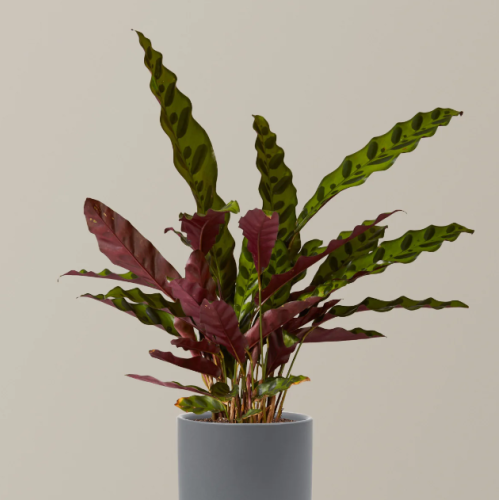
Popularly known as the rattlesnake plant, 'this beauty has fresh green leaves with darker green stripes and burgundy coloring on the underside.
Originating in Brazil, Calathea Lancifolia is perfect as a taste of the tropical rainforest,' says Mark of Happy Houseplants.
Its common name has come about because of its markings, which look like a rattlesnake's skin. You can find rattlesnake calathea plants in stylish pots at The Sill.
'It needs bright but indirect light – if placed in full sun, the leaves may curl up and burn. Always keep Calathea damp throughout the year, but let it dry out between waterings so that the roots can breathe,' Mark adds.
As well as being good Feng Shui plants, calathea also make great pet-friendly house plants.
10. String of Hearts – Ceropegia woodii

'More commonly known as a string of hearts, the heart-shaped leaves make Ceropegia woodii the perfect feng shui plant gift for someone special,' says Mark of Happy Houseplants.
'It is an easy-care delight, with trailing leaves in gorgeous green and purple. A very fast grower, with a bit of care, this little beauty will thrive in a small pot for years.
'It likes a shady corner, but it will also enjoy a sunny spot, so it's not a fussy plant,' he adds.
Start your collection with this string of hearts in a hanging planter, from Lowe's.
11. Aloe Vera
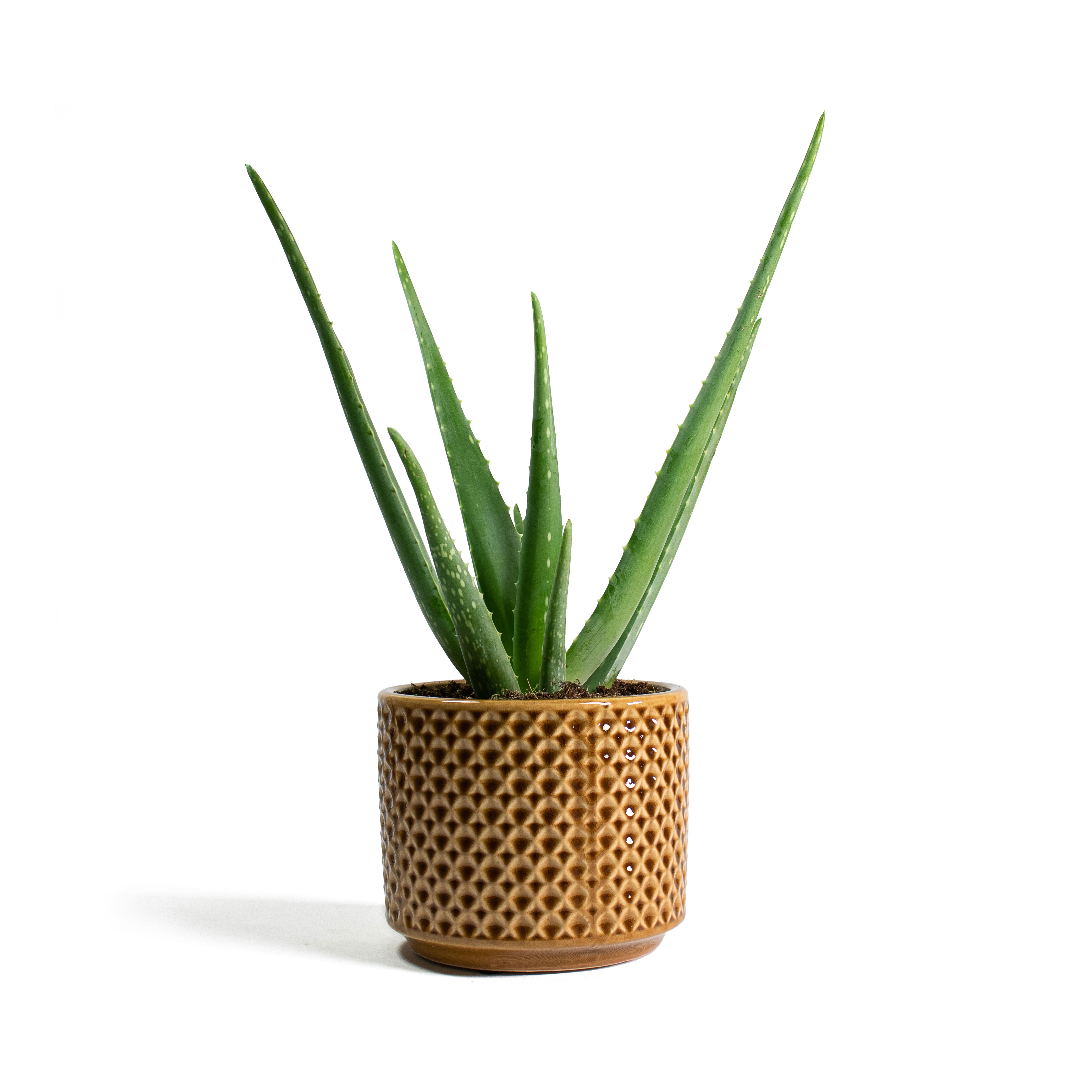
An easy-to-care-for house plant, aloe vera has thick, fleshy stems that contain a translucent gel that is favored for its healing and soothing properties.
'The aloe vera is also said to ward off bad luck and bad energy, helping you to realign your space and create a welcoming and positive aura,' says Mark McCance of Hortology.
Learn about aloe plant care to get the most from these feng shui plants. 'As they only require watering every 2-3 weeks during summer, they are the perfect addition for homeowners who are fond of a summer getaway,' Mark adds.
You can find aloe plants available from Lowe's.
12. Peace Lily

The peace lily is a favorite in Feng Shui, and is known to keep the energy of a room positive and upbeat. The leaves are used to attract wealth, while the flowers bring good luck.
You can discover so much more about peace lily Feng Shui and where to place one in your home, according to Feng Shui experts in our in-depth guide.
It is important to familiarise yourself with peace lily care to grow the plants successfully. A sunny windowsill is a great spot for these plants and they need god air circulation.
If you want to get your hands on an elegant peace lily, you can find live plants on Amazon.
FAQs
What Plants Bring Good Luck?
There are a number of the feng shui plants listed above that are believed to bring good luck. These include the rubber plant, the snake plant, jade plant and money tree. But there are many more that could bring good luck and add to the positive energy in your home.
Once you start learning about how plant placements fit into the symbolic world of Feng Shui, it's easy to become totally absorbed by it. There are even variegated houseplants for positive Feng Shui.
You can find out even more in Mindful Living, by Anjie Cho and Laura Morris, available from Amazon.
Rachel is senior content editor, and writes gardening content for homesandgardens.com, Homes & Gardens magazine, and its sister titles Period Living Magazine and Country Homes & Interiors. She has written for lifestyle magazines for many years, with a particular focus on gardening, historic houses and arts and crafts, but started out her journalism career in BBC radio, where she enjoyed reporting on and writing programme scripts for all manner of stories. Rachel then moved into regional lifestyle magazines, where the topics she wrote about, and people she interviewed, were as varied and eclectic as they were on radio. Always harboring a passion for homes and gardens, she jumped at the opportunity to work on The English Home and The English Garden magazines for a number of years, before joining the Period Living team.
- Rachel BullHead of Gardens
